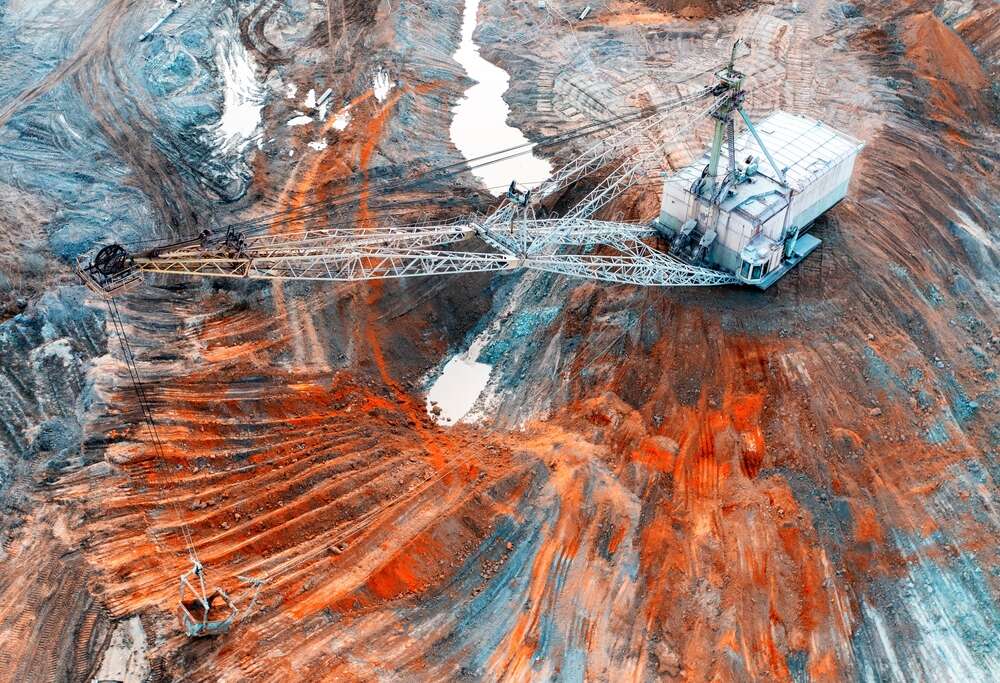
The Sámi have been herding reindeer for millennia. Europe’s only recognised indigenous people, they’ve survived repeated — and often brutal — attempts at colonial subjugation in Norway, Sweden, Finland and Russia. Now, they’re sounding the alarm about the prospect of mining rare earth metals in Arctic Sweden.
In January, Swedish state-owned mining company LKAB uncovered Europe’s largest deposit of rare earths, used to make the magnets found inside everything from wind turbines and electric vehicles to smartphones and guided missiles. Advocates hailed the discovery as a pathway to ending Europe’s reliance on China, which dominates the market for these all-important materials. But local Sámi groups told Euronews that mining could make their traditional way of life impossible. The newly discovered deposits, after all, are located slap bang on the last-remaining crossing point used by local reindeer herders heading to their winter pastures.
Tensions between local communities and national ambitions might get more common as the West scrambles to build a sustainable supply chain for rare earths outside of China. Countries are keen to break the country’s monopoly, especially with Beijing currently threatening a ban on exports of some of these vital materials. It’s the latest move in China’s ongoing battle with the United States for technological dominance and comes hot on the heels of Washington’s decision to impose restrictions on exports of high-end semiconductors.
Beijing’s threats could have big consequences: some 98% of rare earths used in the EU in 2021 were imported from China, per Reuters. And it’s not just about mining: the materials have to go through “multiple intermediate stages” — many of them in China — “before they end up in the engines of Europe’s wind turbines,” says Marie Le Mouel, a fellow at Brussels-based think tank Bruegel. On top of undertaking 63% of the world’s rare-earth mining in 2022, China also accounted for 85% of processing and 92% of magnet production, according to Politico. Building an alternative model could, therefore, prove costly – in more ways than one.

Tough Mudder
Demand for rare earths is expected to increase fivefold by 2030 in Europe — in large part due to the continent’s ecological ambitions, which involve ramping up the production of electric vehicles. This pattern will likely be echoed globally in tandem with growing demand for smartphones and greener automobiles. “People’s standard of living is increasing around the world,” says Stan Trout, founder of rare earths consultancy Spontaneous Materials. “That, indirectly, points you towards more magnets.”
Keeping those magnets competitively priced is dependent on their constituent materials being sourced from multiple locations — a tall order, given the maturity of China’s rare earth sector. This wasn’t always the case. Ironically, the US was a world leader in the supply chain until the 1980s, when domestic environmental pressures and cheaper overseas labour pushed production abroad. China then ‘strategically flooded the global market’ with rare earths at cheaper prices to drive out competitors, according to a 2018 report from the US Department of Defence.
Multiple rare earth metal deposits have been discovered since then, from Malawi and Namibia to Sweden and Australia. But there’s a host of technical and environmental dilemmas that make it tricky to extract, process, and refine these materials before they can be used in our smartphones.
For one thing, many of these deposits consist of mixed seams of high-value deposits like neodymium and terbium, and lower-value lanthanum or cerium, the separation of which eats into any mining operation’s profit margins. They’re also often found at fairly low concentrations, which can make mining rather uneconomical. As such, says Trout, "the ‘magnet people’ are basically paying for everything”.
Then your average mining consortium has to consider the risk that any new site might be located in or near thorium deposits. Exposure to the metal, which emits radiation at low levels, has been linked to the development of lung and pancreatic cancer. There’s also the simple fact that China has a hefty headstart when it comes to supporting the global rare earth metals supply chain. It can take an entire decade between identifying a project and bringing it onstream — a lag that can be further delayed by limited cash flow or regulatory obstacles, explains Trout. Europe also needs time to reacquaint itself with the basics of rare earth mining on the continent. Simply put, it’s been out of the game for a while now, says Ormerod: “We don’t have people with all the different levels of know-how.”

Sweden's rare earth metals bounty
It’s also not straightforward on the environmental front. Rare earths are vital for building electric vehicles and wind turbines, which are central to Europe’s ecological ambitions, but their extraction often brings its own environmental costs — generating toxic waste that can harm local wildlife and communities.
Inflicting environmental damage to do environmental good in the case of mining is, according to Trout, a choice: there are plenty of steps that can be taken to ensure the extraction of rare earth metals remains ecologically harmless. For its part, China hasn’t set a good example. Many mining corporations in the country have historically used a method called heap leaching, which involves pouring acid into a pile of rare materials. Without strong safeguards, this allows toxic waste to seep into the ground and nearby waterways. “Was there a better way to do this? Absolutely. Why didn’t they do it? It was a little bit more expensive,” says Trout. Chinese officials have sought to shut down illegal and small-scale rare earth mining operations and embarked on a clean-up of polluted sites, but Global Witness and Earth.Org say severe ecological threats remain unresolved.
While adhering to tougher environmental regulations will be costlier in the short term, Trout says it’ll be a worthwhile investment in our future — and might even be a perk of the mounting pressure to move beyond China.
Ormerod shares Trout’s optimism. He points to the Mountain Pass Mine — an open-pit mine of rare earths owned by MP Materials which supplied 15.8% of the world’s rare earth production in 2020. It’s in California, which has one of the toughest environmental regulations in the US. “MP Materials has obviously managed to meet all those state and federal requirements,” says Ormerod. “It can be done.”
Le Mouel is less confident. She calls the environmental damage a “trade-off” for building a sustainable supply chain of these all-important materials. Europe wants to cut off China while living up to its environmental aspirations. “It’s not clear that both objectives can be achieved,” she says.
There’s no easy answer. Hailing the recent discovery of deposits in Sweden, Ebba Busch, the country’s minister for Energy, Business and Industry, said that the EU’s “self-sufficiency and independence from Russia and China will begin in the mine”. But the people that already live alongside those deep deposits aren’t so happy. ‘The EU’s last indigenous people are being sacrificed to solve the EU’s dependence on China and Russia,’ said ‘Our New Kiruna’, a group representing the local Sámi villages of Laevas and Gabna, in a recent statement.
There’s also the chance, says Le Mouel, that Sweden’s discovery may have been over-hyped. “Domestic production offers very little scope to solve any of the challenges” that Europe is facing, she argues — adding that the continent will need to work hard to invest in sustainable production overseas.
Ormerod, for his part, feels confident. While beating China at its own game will be a tough balancing act and might pass higher costs onto consumers, the magnetics consultant believes it’s the only path to secure a truly sustainable future. “I think we’ll crack this nut,” he says.






